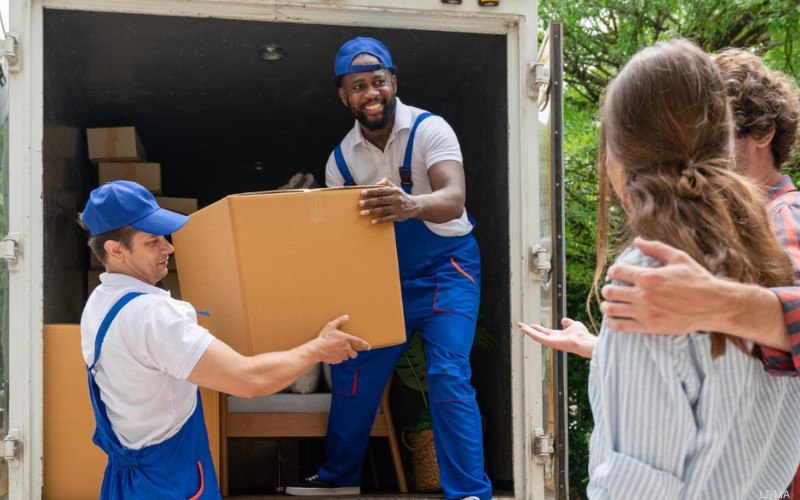Welcome to our comprehensive “Do-It-Yourself” guide on how to effectively pack your house for a long distance move. Ask anyone who’s already done it and they’ll surely tell you that moving to a new home, especially via a long distance move, can be a rather daunting task. So when it comes to having a smooth and hassle-free relocation, engaging in some decent pre-move planning can be a definite difference maker come moving day.
In this article, we’ll provide you with expert tips and advice on such things as packing supplies, room-by-room packing strategies, labeling and inventory, and pretty much everything else you need to know to make your long distance move a bona-fide success.
Answer to the Question
When it comes to preparing for a long distance move, packing your home efficiently is crucial. Successfully packing for a long distance move involves smart and careful planning while always maintaining that attention to detail to ensure the future safeguarding of your belongings during transit.
Planning for the Move
Planning and organization are rather vital aspects of preparing for a long distance move. With careful consideration, detailed planning, and efficient organization, the entire moving process can be significantly streamlined. Let’s delve into the key elements that make up good planning and organization:
The Planning Stage: Getting Started
When it comes to planning, a comprehensive moving checklist is essential for a successful long distance move. This checklist should encompass all the tasks that need to be accomplished before the big (moving) day. It serves as a roadmap, ensuring that no important details are overlooked.
- Begin the planning process well in advance to avoid any last-minute stress; we recommend as much as 6 to 8 weeks in advance.
- Make sure to include tasks such as transferring utilities, notifying important contacts of the address change and researching quality service providers in your new destination area.
- A great tip is to break down the checklist into manageable sections, such as: pre-move, moving day, and post-move tasks.
Organizing Your Belongings
Now that you’ve created your checklist and worked out the overall game plan, it’s now time to start organizing your belongings into specific categories. This is a fundamental step that will greatly contribute to a sweepingly smooth packing process. Categorize items based on their fragility, weight and importance. Here are some immediate ways to help you effectively organize your belongings:
- Sort items into categories, such as: fragile, heavy, frequently used, and seasonal.
- Use color-coded labels or tags to indicate the contents of each box and its designated room in the new home. (We get more into utilizing labels and such a little later.)
- Create an inventory of all the items, including details such as quantity, value, and special handling instructions if applicable.
By taking the time now to meticulously plan and organize, the overall packing and moving process will be so much more manageable and less stressful, ultimately leading to a higher degree of success with your upcoming move. Trust me, you will thank yourself in the end!
Downsizing: A Great Option
Ever thought of downsizing? Yes, it may seem too tedious a task to even think about, to add on “downsizing” to an already daunting checklist! But downsizing your belongings truly is a great option to help with the overall moving process, especially when you’re going a fair distance. By reducing the number of items you need to pack and transport, you can significantly lower the time, effort and cost associated with the move. Here’s some insight into why downsizing can be beneficial:
- Minimizes Clutter:
Downsizing allows you to declutter your space and get rid of items that are no longer needed or used. That is the extremely obvious benefit, but in this particular context of embarking on a big move, the value can be quite great: 1) it helps you create a fresh start in your new home, and 2) more practically, helps prevent unnecessary items from taking up any more space.
- Eases Packing and Unpacking:
With fewer belongings to pack and unpack, the entire process becomes that much more efficient and less time-consuming. It also reduces the chances of items getting damaged during transit.
- Saves Money:
Moving fewer items means lower transportation costs, less packing materials required, and potentially, smaller storage space needed in the new home.
- Promotes Decision Making:
Downsizing ultimately forces you to confront and evaluate your possessions and to make conscious decisions about what to keep, donate or discard. Thus, as an end result, this downsizing process can genuinely help lead to a more organized and purposeful new living environment.
Packing Supplies and Materials
When preparing for a long-distance move, one of the first things to tackle is gathering the right packing supplies. It all starts with the essentials: sturdy cardboard boxes, strong packing tape (+ tape dispensers), permanent markers and labels to keep everything organized. Things like: bubble wrap, packing peanuts and furniture blankets are crucial add ons to help protect your items during a long transit. It is important to invest in good quality packing supplies to ensure the safety of your belongings. And for those delicate or bulky items, like dishes and clothing, specialized boxes—dish packs and wardrobe boxes—offer added security and convenience.
As you dive deeper into the packing process, sourcing the right supplies may become even more critical. Fortunately, most hardware stores and moving companies offer a wide range of materials, from mattress bags to furniture covers. For fragile items such as mirrors or artwork, custom-sized crates or boxes may be necessary to ensure safe delivery.
To ease the strain of moving larger items, consider renting or borrowing a dolly—it’ll make transporting heavy loads so much easier. In the end, having the proper supplies not only streamlines your packing but also ensures that everything arrives at your new home safe and sound.
Packing Room by Room
You’ve gathered all your needed packing supplies, now you’re finally ready to actually start packing! And to help greatly boost both your organization and efficiency, we strongly recommend taking a room-by-room approach. This method allows you to focus on each space, ensuring no item is overlooked. Let’s break down how to effectively begin packing each room.
Start with the bedroom. We suggest starting here because it’s a space that often holds a variety of items, from clothing and bedding to particular personal belongings. Here is also the perfect space to start decluttering: sort through closets and drawers, setting aside items you no longer need. Once you’ve narrowed down your “must have” belongings, carefully pack and label boxes, noting their contents and destination. A big tip: use color-coded labels to simplify and streamline both the packing and unpacking process.
Next, move to the kitchen. Start with non-fragile items like pots and utensils, making sure to securely wrap them to prevent any scratches or damage. For fragile items such as dishes and glassware, use protective materials like bubble wrap and packing paper. Once again, properly label each box with detailed information to make the unpacking much easier.
Now to the living room, where tackling any electronics is the first piece of business. Pack electronics carefully, such as TVs and gaming consoles, using their original packaging if possible. If the original packaging isn’t available, prep them as best you can using high-quality packing materials and boxes. When it comes to furniture, in any room, disassemble any pieces that can be broken down to save space and make its transportation easier.
From here, continue the same packing process, systematically going room by room or space by space, such as the bathroom, storage closet, garage, basement, and so on, until your home is now fully packed and (literally) ready to go.
Lastly, don’t forget to pack a separate box of essentials—like toiletries, a change of clothes, important documents and any other necessities—clearly marked as ‘open first’ for easy access. As you can imagine, doing this alleviates the stress of having to search through multiple boxes in the initial stages of settling into your new space.
Packing Tip 101
As you pack, focus on less frequently used items first, things like seasonal clothing, specialized kitchen gadgets and occasional home decor. There are a few benefits to doing this, one is that it’s allowing you to essentially already have these items set aside and safely stored for much easier access whenever they’re needed in the future. Overall, packing these items early also helps reduce present time clutter and makes the packing and unpacking process that much smoother. You’re basically telling yourself when you arrive at the new location: these are items I don’t need to concern myself with any time soon.
Labeling and Inventory
Labeling and creating an inventory of your packed items is essential for a seamless unpacking process at your new home. Clearly label each box with its contents and the room it belongs to, and maintain a detailed inventory list to keep track of all your belongings. Taking photographs of valuable items and their condition before packing them can serve as a visual record for insurance and any damage claims, if needed. This meticulous approach to labeling and inventory will ensure that your belongings are fully accounted for and easily accessible after the move.
Some Best Practices
- Use color-coded labels to easily identify which room each box belongs to
- Include a brief description of the box’s contents on the label
- If doing this by hand, using a permanent marker on any box or packaged item is recommended
- Utilize a numbering system to cross-reference the inventory list with the corresponding boxes
- Consider using an inventory management app to keep track of items and boxes
- Designate a specific area in your new home for the unpacking and organizing of items according to the labeled boxes
Conclusion
In summary, to pack your house efficiently for a long-distance move it requires careful planning, organization and attention to detail. By following the expert tips and strategies outlined in this guide, you can greatly streamline the packing process, while at the same time, help ensure the safety of your belongings during the long haul. With the right approach, like investing in high-quality packing supplies, packing room by room and maintaining a detailed inventory—your long-distance move can ultimately be a successful, yet stress-free journey to your new home.
We have provided you with this comprehensive DIY guide, but if at the end of the day, you find that you just don’t have the time or are short on help to actually make it happen—you can always reach out to a team of proven, professional long-distance movers to expertly and precisely handle the job for you.
With the right help, your long-distance move can actually be quite smooth and hassle-free. So if you’d like some extra support, Long Distance Movers America is here to help with our various professional packing and pre-planning solutions, while still keeping everything on budget. Ready to get packing? Give us a call at 1-877-535-8893, and let’s make your move as efficient and hassle-free as possible!





